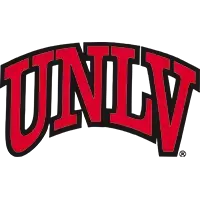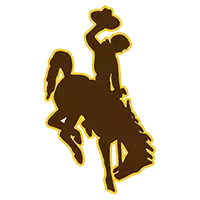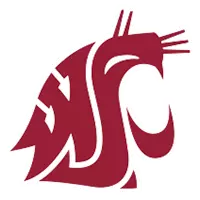Colorado State University Athletics

Memorable Moments: Finding a Classic Style
11/21/2024 2:00:00 PM | Football
CSU’s helmets have changed throughout time
Many football fans love style. Not just the style of playing the game, but the style of uniforms, jerseys and helmets alike. Endless debates among fans go on about what was the best uniform worn by the Rams. Not just at CSU, but other schools and their fans and players enjoy different uniforms. Especially helmets, which can have a decoration which brands a school's team for many years.
The football helmet was created in the 19th century as more of a thin piece of leather which protected a player's head from getting scratched when he hit the dirt and rocks of those early playing surfaces. As time wore on, thicker leather with some padding sewn inside the leather gave very little protection. From the 1920s to the 1940s, the leather helmet, without a facemask embodied old-school football.
The Aggies had several colors and simple designs during this period, most notably during the 1930s with an orange helmet which had two green stripes painted in a cross pattern over the top. One of these helmets, worn by John Mosley in 1939, is on display in the Hall of Champions until July of 2025.
It was not until 1950 when leather was deemed obsolete and plastic helmets changed the game. Former halfback and kicker, Frank Faucett, recalled in a 2008 interview when the helmet salesman came to Colorado A&M to pitch the plastic helmet to coach Bob Davis.
"I was in Bob Davis' office with Lyle Stucker and the salesman from the helmet company had us try on the new plastic helmet," Faucett said. "He then told us to ram into one another's heads wearing this new helmet. We did and then he gave us our leather helmets back and said, 'now do that again wearing leather,' Lyle and I refused, and coach Davis bought the plastic helmets on the spot."
The Rams first took the field in a plastic helmet for the 1950 football season, a very simple yellow helmet, no facemask, with a dark green stripe over the top from front to back. Plastic helmets allowed for designs, and in 1951, the first ram horn helmets were painted. This new design was a dark green helmet, still no facemask, with a bone-style of ram horn in white paint. This style, deemed as a favorite of fans more than 70 years later, were worn by the Rams from 1951 to 1956, no facemask was ever placed on this style of helmet. Gary Glick stated, "We didn't want facemasks, all the other team did was grab them if you had one."
In 1957, the facemask was made a rule in college football and the helmets were repainted to only have the player's numeral on each side of the dark green solid base, like how Alabama has done for so many years. While this style was bland by many standards, the helmets themselves were aged and in terrible condition. They had been the same helmets bought many years prior and halfback Alan Ashbaugh hated his college helmet. He stated in a 2009 interview, "My college helmet was garbage, just beat up and in terrible shape, so I painted my high school helmet green and used that in 1958."
That helmet, donated to CSU by his family after he passed away in 2016, is on display in the Hall of Fame in Moby Arena.
From the late 1950s to the early 1960s, helmet designs were less than exciting. A redesign in 1960 only made the player's numeral larger, then in 1962, coach Mike Lude bought new helmets, and they were bright yellow with a green and white stripe from front to back. Many players of the 1960s said, "We were trying to look like the Green Bay Packers, without the side 'G' logo, but we didn't play like the Packers of the 1960s."
When Jerry Wampfler was hired as the Rams head coach in 1970, (Head coaches usually made uniform design changes for many decades) he had come from Notre Dame and wanted a plain yellow helmet with no other color or logo. Occasionally players might get a sticker on the helmet, but Wampfler wanted the Rams to look like Notre Dame. Once again, they didn't play like Notre Dame.
It was Sark Arslanian who finally brought back the ram horns in 1973, but since all of the CSU helmets were already yellow, he kept the base color yellow and the horns, a solid green like the Los Angeles Rams. This style lasted from 1973 to 1981, with the thickness of the horns varying, sometimes larger for linemen and thinner for other positions.
Keep in mind, to this time, all of these designs were typically painted onto helmets, or a decal used in some cases. The week-to-week maintenance was draining on equipment managers and in many cases, it was common to see the ram horns peeled and chipped off the helmets.
In 1982, Leon Fuller reversed the helmet colors to a green helmet and a bright yellow horn, a style that lasted through the Earle Bruce era until Sonny Lubick arrived.
In 1993, Sonny Lubick's era began with a major change to CSU's colors and even logos. Lubick wanted a true gold look to his uniforms and that included the ram horn on the helmets. The same green helmet remained, but the horns were painted a bright metallic gold. This style has virtually been the same with CSU's traditional helmets since 1993 and remain today.
However, in recent years, there has been a demand to have alternate style helmets. We won't discuss the structure of helmets and how they have changed, but more of the styles brought about by State Pride uniforms, school anniversaries or Ag Day. However, no helmet style has been around longer than the current green with gold horns, celebrating 32 seasons of a classic style which will live on for many more years.
The football helmet was created in the 19th century as more of a thin piece of leather which protected a player's head from getting scratched when he hit the dirt and rocks of those early playing surfaces. As time wore on, thicker leather with some padding sewn inside the leather gave very little protection. From the 1920s to the 1940s, the leather helmet, without a facemask embodied old-school football.
The Aggies had several colors and simple designs during this period, most notably during the 1930s with an orange helmet which had two green stripes painted in a cross pattern over the top. One of these helmets, worn by John Mosley in 1939, is on display in the Hall of Champions until July of 2025.
It was not until 1950 when leather was deemed obsolete and plastic helmets changed the game. Former halfback and kicker, Frank Faucett, recalled in a 2008 interview when the helmet salesman came to Colorado A&M to pitch the plastic helmet to coach Bob Davis.
"I was in Bob Davis' office with Lyle Stucker and the salesman from the helmet company had us try on the new plastic helmet," Faucett said. "He then told us to ram into one another's heads wearing this new helmet. We did and then he gave us our leather helmets back and said, 'now do that again wearing leather,' Lyle and I refused, and coach Davis bought the plastic helmets on the spot."
The Rams first took the field in a plastic helmet for the 1950 football season, a very simple yellow helmet, no facemask, with a dark green stripe over the top from front to back. Plastic helmets allowed for designs, and in 1951, the first ram horn helmets were painted. This new design was a dark green helmet, still no facemask, with a bone-style of ram horn in white paint. This style, deemed as a favorite of fans more than 70 years later, were worn by the Rams from 1951 to 1956, no facemask was ever placed on this style of helmet. Gary Glick stated, "We didn't want facemasks, all the other team did was grab them if you had one."
In 1957, the facemask was made a rule in college football and the helmets were repainted to only have the player's numeral on each side of the dark green solid base, like how Alabama has done for so many years. While this style was bland by many standards, the helmets themselves were aged and in terrible condition. They had been the same helmets bought many years prior and halfback Alan Ashbaugh hated his college helmet. He stated in a 2009 interview, "My college helmet was garbage, just beat up and in terrible shape, so I painted my high school helmet green and used that in 1958."
That helmet, donated to CSU by his family after he passed away in 2016, is on display in the Hall of Fame in Moby Arena.
From the late 1950s to the early 1960s, helmet designs were less than exciting. A redesign in 1960 only made the player's numeral larger, then in 1962, coach Mike Lude bought new helmets, and they were bright yellow with a green and white stripe from front to back. Many players of the 1960s said, "We were trying to look like the Green Bay Packers, without the side 'G' logo, but we didn't play like the Packers of the 1960s."
When Jerry Wampfler was hired as the Rams head coach in 1970, (Head coaches usually made uniform design changes for many decades) he had come from Notre Dame and wanted a plain yellow helmet with no other color or logo. Occasionally players might get a sticker on the helmet, but Wampfler wanted the Rams to look like Notre Dame. Once again, they didn't play like Notre Dame.
It was Sark Arslanian who finally brought back the ram horns in 1973, but since all of the CSU helmets were already yellow, he kept the base color yellow and the horns, a solid green like the Los Angeles Rams. This style lasted from 1973 to 1981, with the thickness of the horns varying, sometimes larger for linemen and thinner for other positions.
Keep in mind, to this time, all of these designs were typically painted onto helmets, or a decal used in some cases. The week-to-week maintenance was draining on equipment managers and in many cases, it was common to see the ram horns peeled and chipped off the helmets.
In 1982, Leon Fuller reversed the helmet colors to a green helmet and a bright yellow horn, a style that lasted through the Earle Bruce era until Sonny Lubick arrived.
In 1993, Sonny Lubick's era began with a major change to CSU's colors and even logos. Lubick wanted a true gold look to his uniforms and that included the ram horn on the helmets. The same green helmet remained, but the horns were painted a bright metallic gold. This style has virtually been the same with CSU's traditional helmets since 1993 and remain today.
However, in recent years, there has been a demand to have alternate style helmets. We won't discuss the structure of helmets and how they have changed, but more of the styles brought about by State Pride uniforms, school anniversaries or Ag Day. However, no helmet style has been around longer than the current green with gold horns, celebrating 32 seasons of a classic style which will live on for many more years.
Colorado State Football: Lanier (L) and Mitchell (R) Post-Game (Wyoming, 2025)
Monday, October 27
Colorado State Football: Tyson Summers Post-Game (Wyoming, 2025)
Monday, October 27
Colorado State Football: Owen Long - Outstanding By Any Measure
Wednesday, October 22
Colorado State Football: Tyson Summers Media Availability - Week 8 (2025)
Wednesday, October 22










